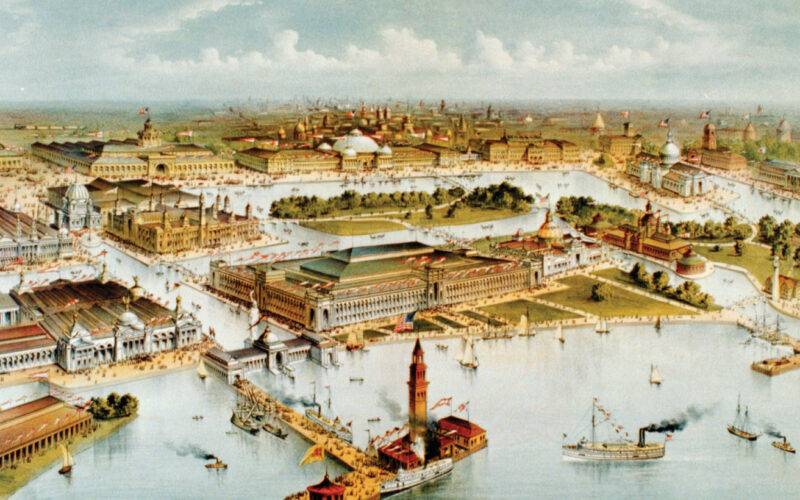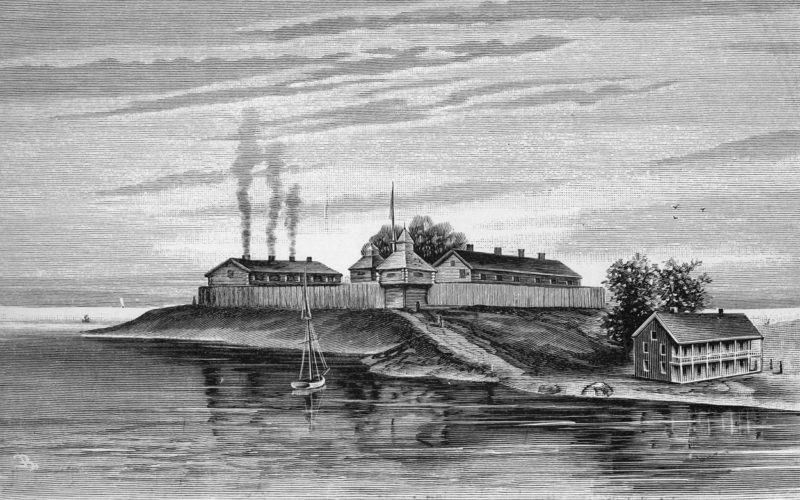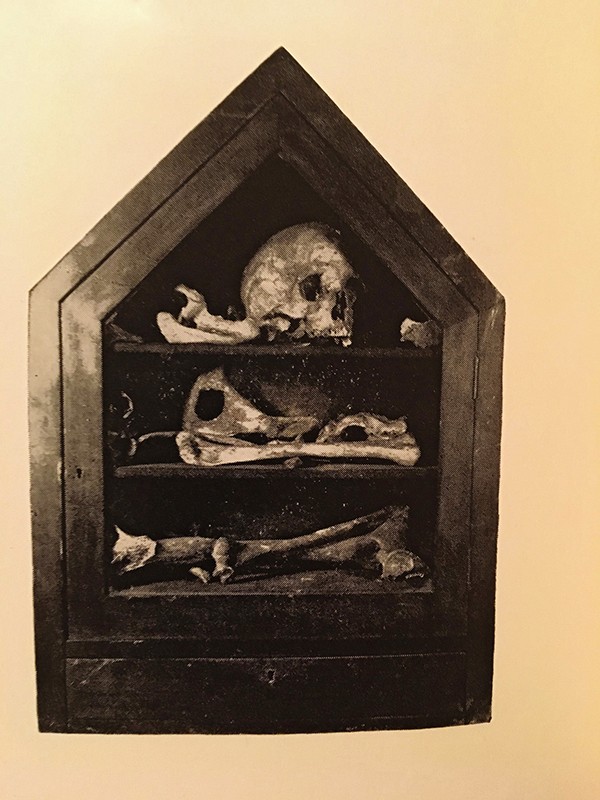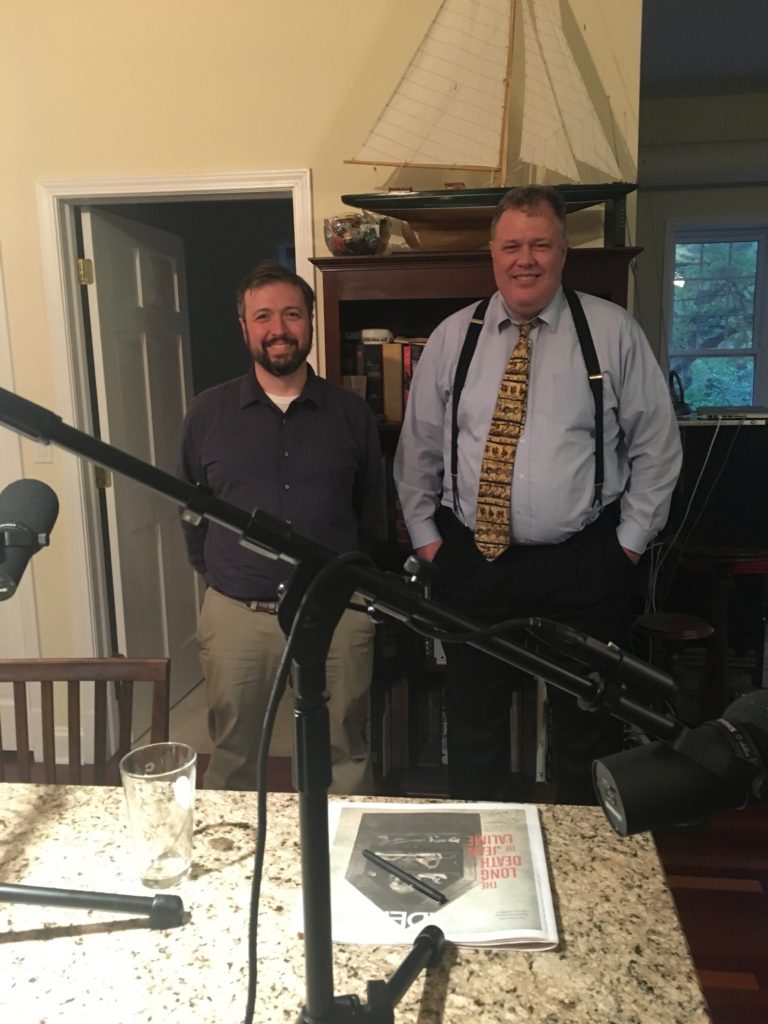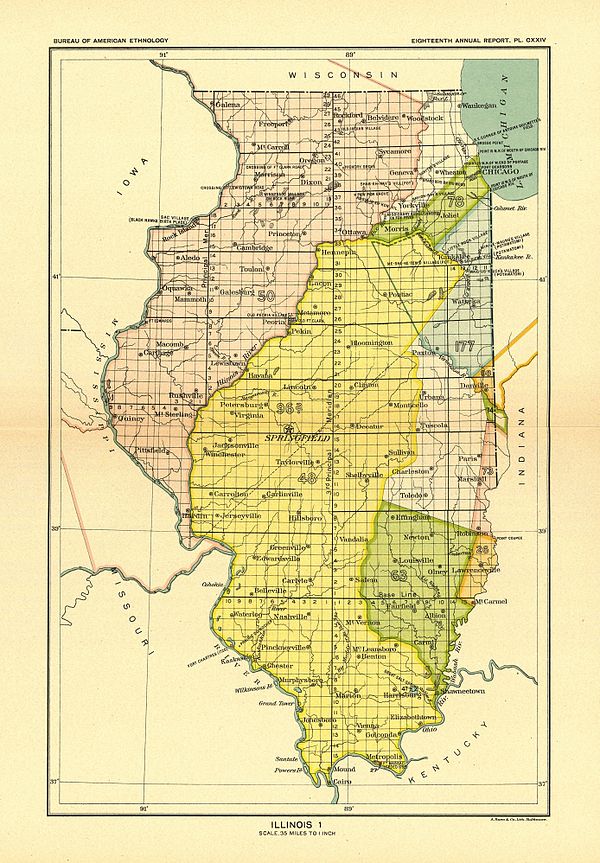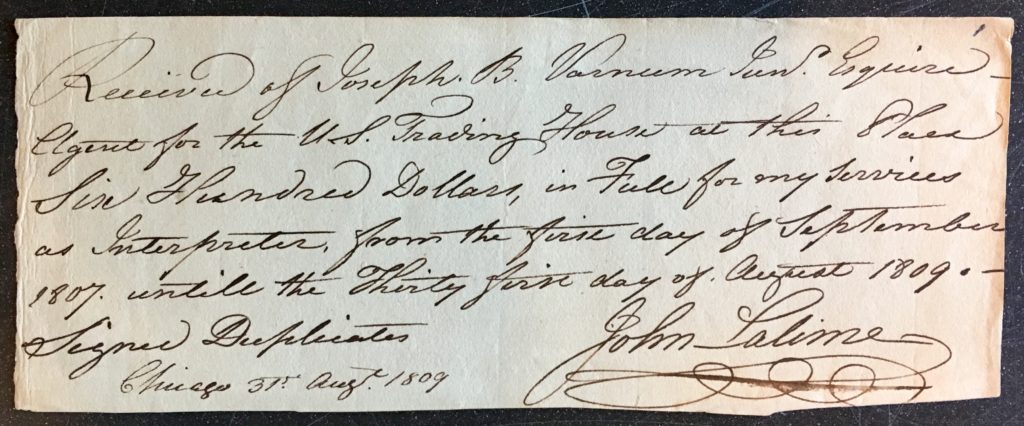Episode 20 – The Third Star – part II
We continue our discussion of Chicago’s first World’s Fair to learn why carousels were risque, the Ferris Wheel encouraged voyeurism, Columbus was cool, and unfortunately racism was the norm. In addition, the 1893 World’s Fair was a launching pad for many new products, industries, and processes that were promoted, were popularized or invented as a result of the Fair, like the Post Card, Cracker Jacks, the Zipper, and many more.
In this second World’s Columbian Exposition episode, we talk with historian and Director of Exhibitions at the Newberry Library Paul Durica, to explore the various exhibits, tone, and tenor of the Fair and Chicago in 1893. Plus, additional snippets from our interview with historian Jeff Nichols.
This World’s Fair transformed a swampy patch of lakefront, which is now Jackson Park on Chicago’s south side, and remnant lagoons and three harbors still exist there today. Besides these physical remainders of the Fair, this historic exhibition also marked Chicago history through the gathering of many influential people and ideas from around the world. This Fair was the impetus for the sharing of world cultures and intermixing of peoples and traditions that still impacts us today. Join us on this episode for more fascinating stories surrounding the World’s Columbian Exhibition of 1893.

Ida B. Wells 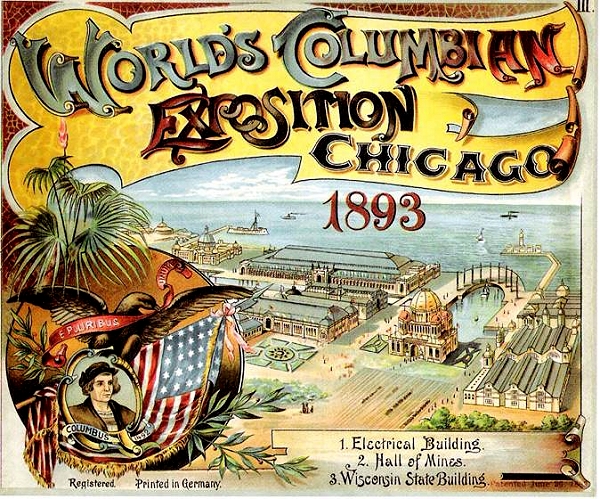
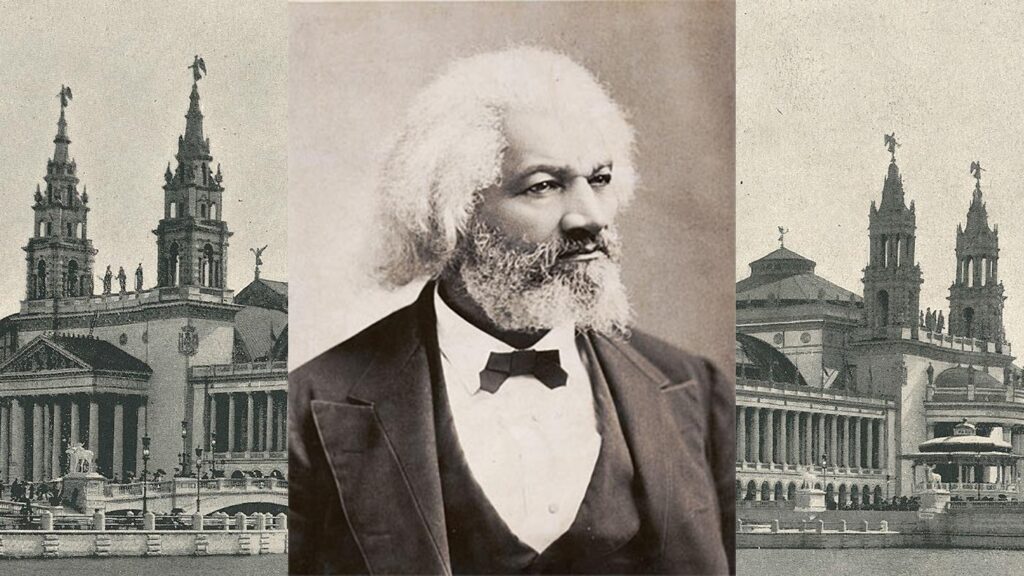
Frederick Douglass 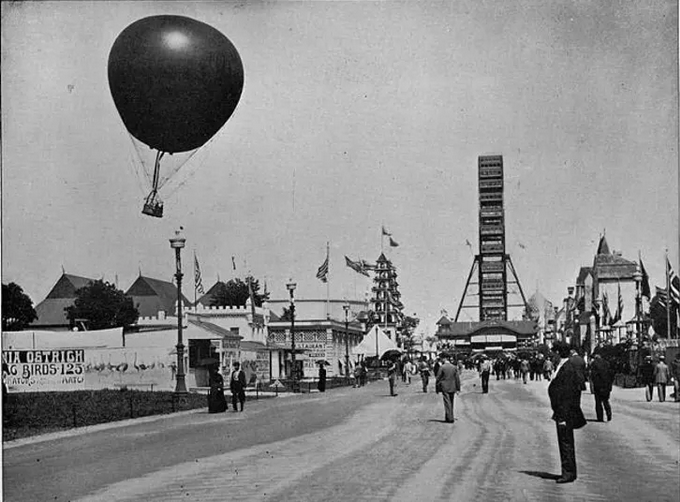
The Midway 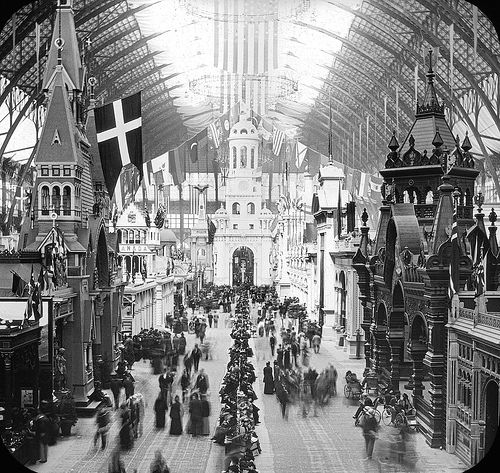
The Liberal Arts Building 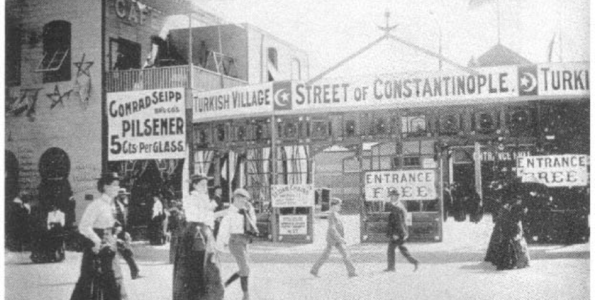
Turkish Village Exhibition 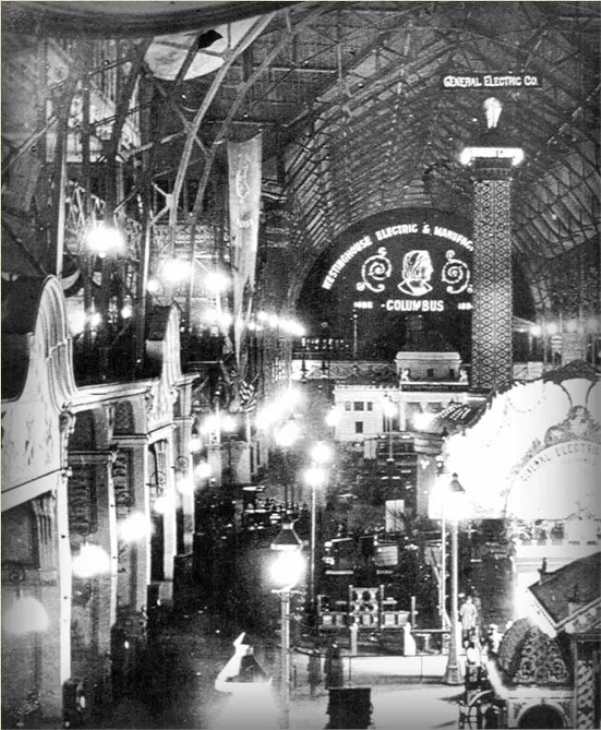
The Electricity Hall 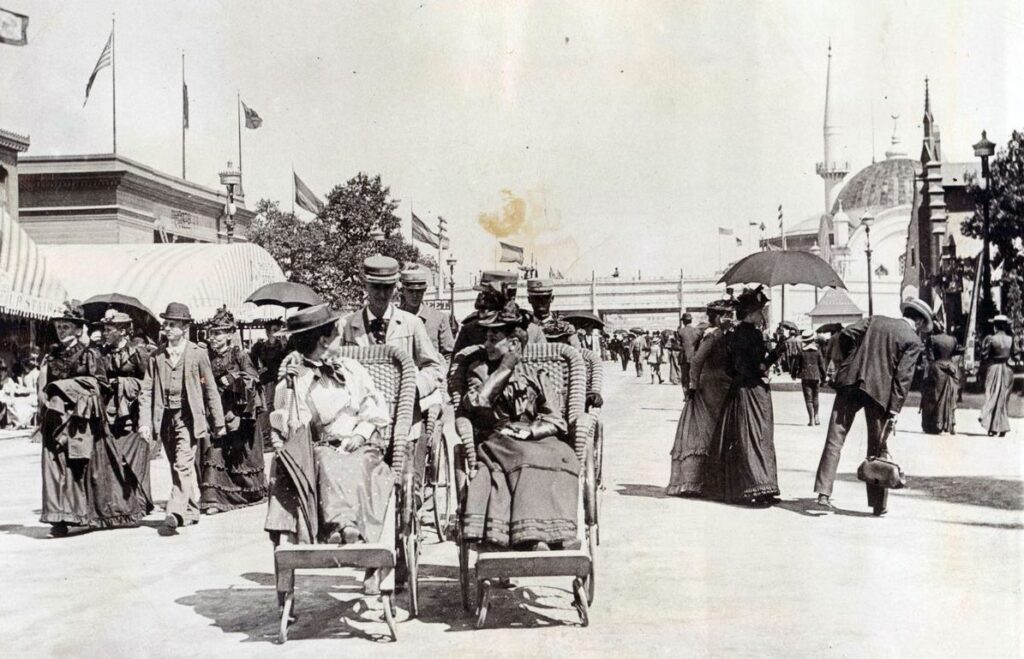
Rickshaws on the Midway Plaisance 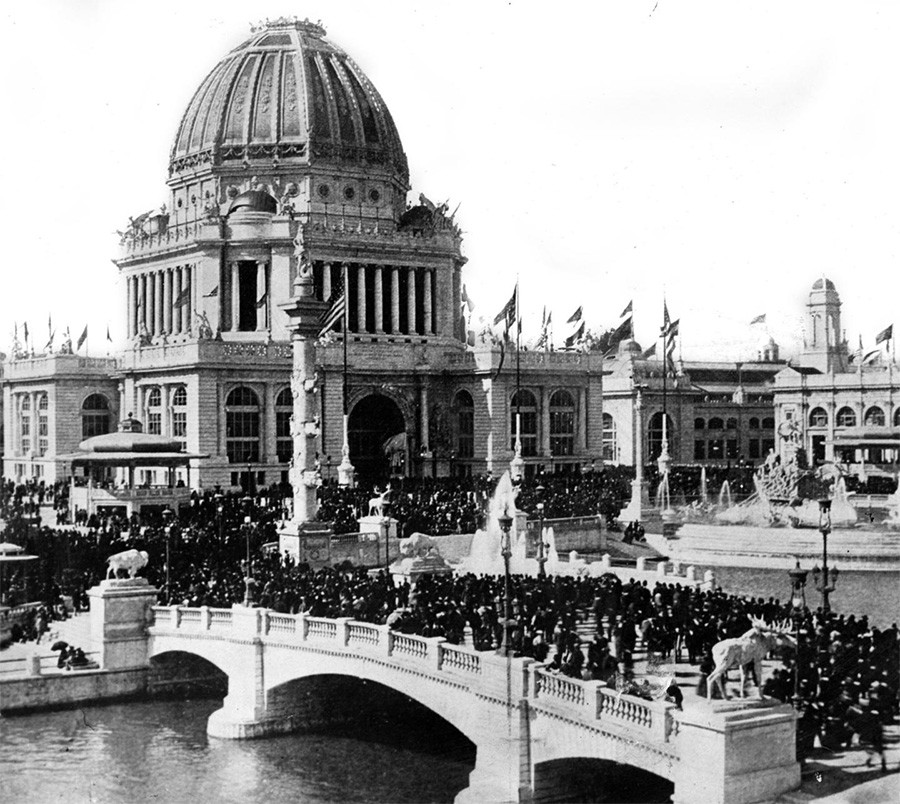
The Administration Building 
The electrified Court of Honor of the White City
Links to Research and Historic Sources:
- Chicago Tribune May 4, 2017 article, “Take a ‘walking tour’ of the 1893 World’s Columbian Exposition — the ‘White City'”
- Chicago by Day and Night, edited by Paul Durica and Bill Savage
- The Midway Airport Historians
- Chicago: City on the Make, by Nelson Algren
- The Auditorium Theatre a national historic landmark
- “Life at the Infamous Civil War Libby Prison,” by Holly Goodbey
- The History of the Carousel
- The Making of the Modern U.S. website, “Chicago’s World’s Fair 1893” about the significance of electrification at the Fair
- Potter Palmer
- Ida B. Wells-Barnett, by Arlisha R. Norwood on the National Women’s History Museum website
- Frederick Douglass (c. 1818 – 1895) on the Biography website
- The Redman’s Rebuke, by Simon Pokagon
- Studs Lonigan, by James T. Farrell
- Julian Hawthorne (1846 – 1934) the American writer and journalist and son fo the novelist Nathaniel Hawthorne
- Steele McKaye actor, playwright, and inventor of the World’s biggest Theater
- Eadweard Muybridge (1830 – 1904) known for pioneering work on motion and early motion pictures
- Frances Hodgson Burnett author of several children’s novels including The Secret Garden (1911)

Museum of Science and Industry today 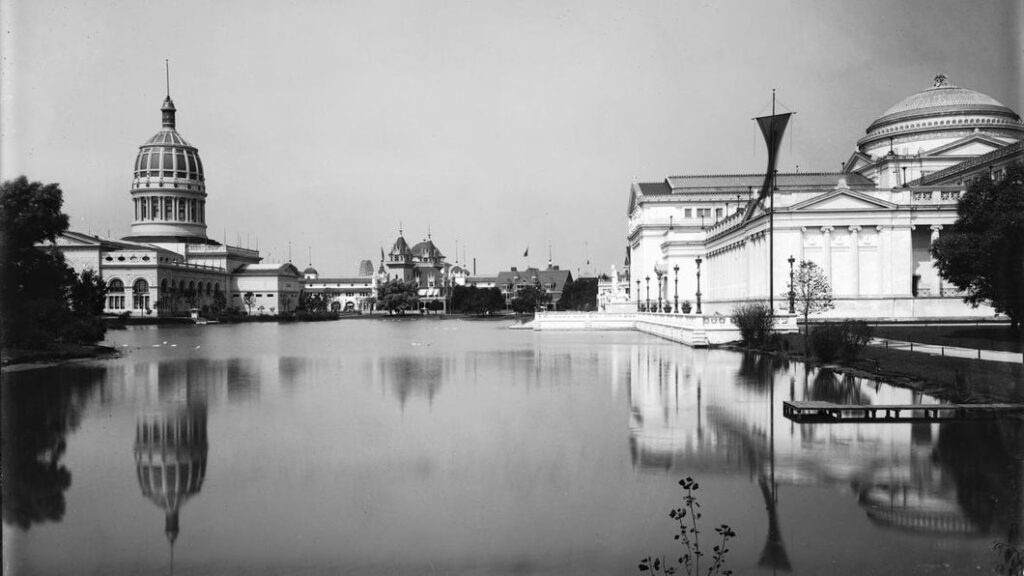
The building on the right as it was at the Columbian Exposition in 1893

